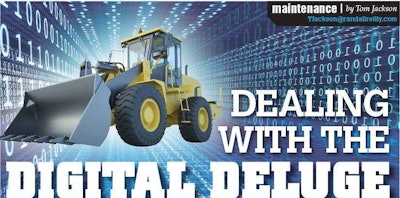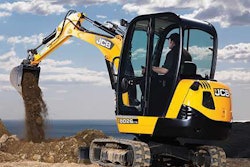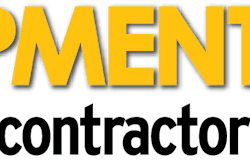
Telematics technology is found on almost every truck in every big trucking fleet in the country today. Trucking companies can’t compete without it. But, to the consternation of many in the industry, adoption rates for off-road heavy equipment remain low.
This year the Association of Equipment Management Professionals surveyed its members to measure their use of and gauge their opinions about telematics technology for off-road fleets.
The AEMP is a group of about 1,000 heavy-equipment fleet managers that offers a variety of educational, training and certification opportunities for equipment management professionals.
The 2013 AEMP Telematics Survey asked members if and how they used telematics and how that experience might be changed to facilitate greater adoption.
In a nutshell, the survey showed that a majority of respondents use the technology, but most of them only use it on 1 to 10 percent of their machines (Charts 1 and 2). Cost, the complexity of accessing the information and a lack of demonstrated ROI are given as the primary reasons fleet managers don’t use telematics more extensively (Chart 3).
Culture matters
A deep dive into the attitudes of fleet managers towards telematics showed some strong, but not surprising, opinions about the technology. One key finding is that company culture is important. It can serve as a barrier to implementation, but also the right corporate culture can also drive deployment.
“Culture is the way a company traditionally does business,” says Stan Orr, president of AEMP. “How a company reacts to new information is usually determined by its culture.”
If a company is entrepreneurial and has a culture of openness and risk taking, if it challenges employees to seek new and better ways to do things, it’s more likely to welcome new technologies.
Interestingly, respondents who identify themselves as “old school” downplayed the impact of culture, while many others felt like the infusion of millennials (people who reached adulthood around the year 2000) into fleets will increase overall comfort with telematics.
Frustration with OEMs
Perhaps the most telling item in the survey was the attitude respondents had toward OEMs and third party providers. According to the survey conclusions:
“OEMs are the taproot of telematics capabilities for most fleets … however they are also the primary source of frustration – for their inconsistent and often challenging approaches to telematics success.”
“All the data these guys need comes from the manufacturers; they’re the main root of the tree,” says Orr. “What makes this difficult for the end user is that each manufacturer does it in a different way.”
For example, OEM No. 1 might define idle time as the vehicle in neutral with the engine idling at 1,200 rpm. OEM No. 2 might also use these criteria but require that the parking brake be set and the driver out of the seat before it designates the vehicle as idle.
With several dozen different manufacturers, each with their own specialized definitions of these data points, collecting and importing this information in a standardized format becomes a challenging task. Without standardization, end users are forced to go to multiple manufacturer websites to collect their information. And exporting this information into an end user’s maintenance or back office software takes computer and IT resources many don’t have.
“That’s the 800-pound gorilla,” Orr says.
Expanding the standard
The AEMP had some success with its Telematics Standard, launched in 2010. This offered OEMs voluntary guidelines on four types of off road machine data: location, hours, fuel use and machine ID.
But some of the biggest benefits that come from telematics are the additional data from things like idle time, performance metrics and information from temperature and speed sensors.
To standardize that data, AEMP has been working with the Association of Equipment Manufacturers, says Orr. The two associations are currently ironing out mutually agreeable definitions of these data points and the operational details such as how often should the information by transmitted by the machine that can be voluntarily adapted by OEMs.
Data security
AEMP and AEM are also working on protocols that would keep the information secure. The AEMP survey found that construction company fleet managers considered the machine information to be theirs and did not want it to fall into unauthorized hands.
OEM’s likewise have the same concerns, says Orr, that without strong security protocols, information could be compiled and used by competitors.
The AEMP and AEM teams anticipate having their data definitions and security protocols finished by December and will begin working on benchmarking concepts next year. The two organizations also plan a major announcement about their telematics initiatives at ConExpo-Con/Agg in March.
Training needed
Currently the AEMP members surveyed look to OEMs or the third party providers for training first and AEMP second. But the fleet managers say the training they’ve seen from OEMs and third party vendors falls short of their needs. Specifically they say they don’t want training that’s quick and dirty.
They want training that’s a “process,” not an “event.” And they want the training to be part of a value proposition from the vendor. To quote from the survey:
“Fleets are asking for better, consistent, more strategic approaches to training… preferably from sources without an agenda.”
At ConExpo, AEMP and AEM will offer educational sessions on how to make a business case for telematics, Orr says. “We have a responsibility to help the equipment manager or the fleet owner understand what the ramifications are of telematics and what it can do to improve your operations and business success,” he says. EW












